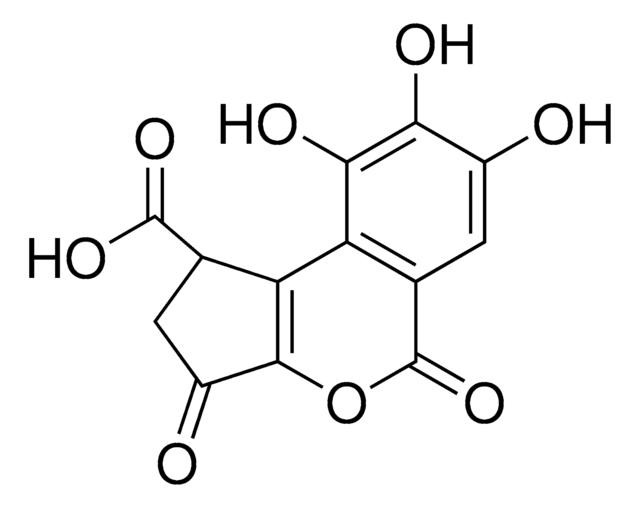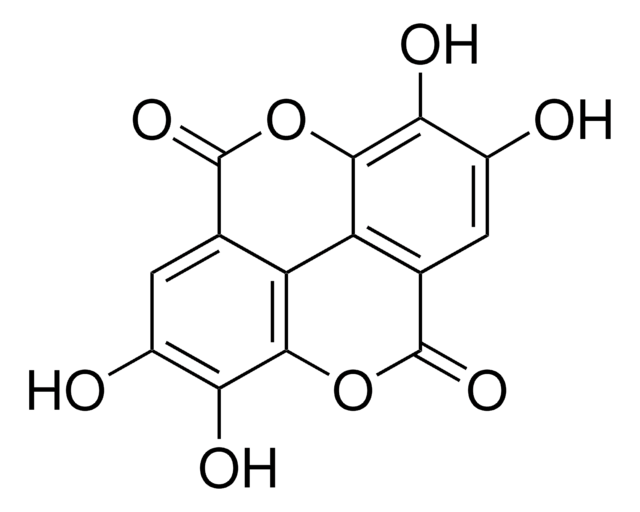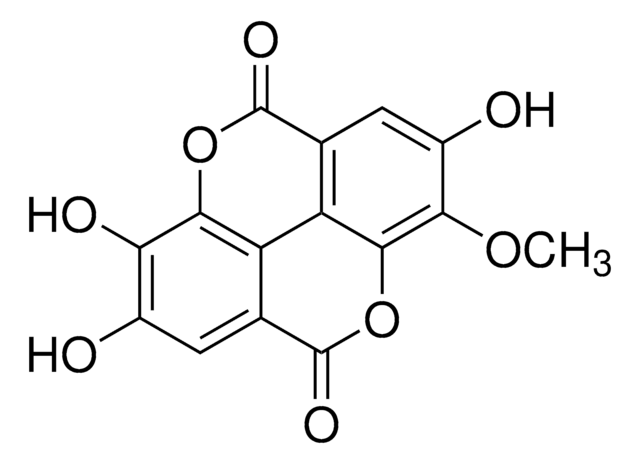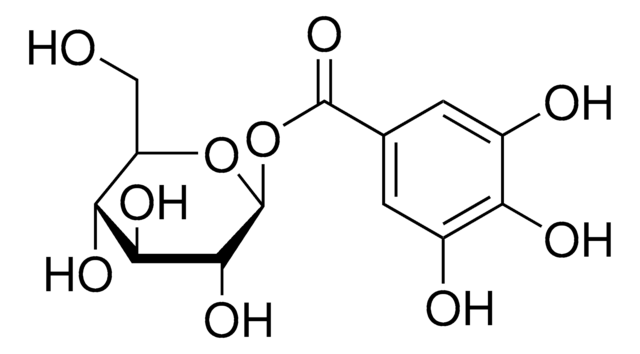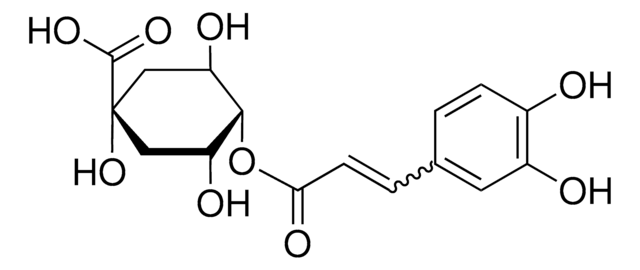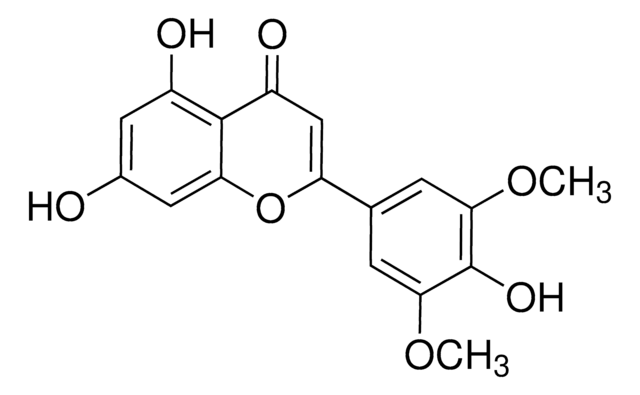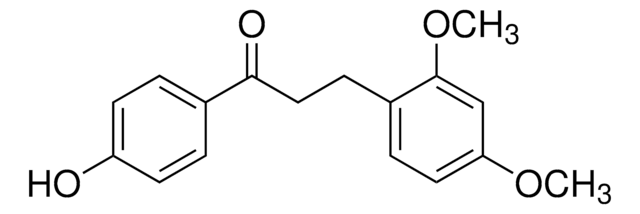SML2429
3,3′,4-Tri-O-methylellagic acid
≥95% (HPLC)
Synonym(s):
3,3’,4-Tri-O-methylellagic acid, 2,3,8-Tri-O-methylellagic acid, 3-hydroxy-2,7,8-trimethoxy- [1]Benzopyrano[5,4,3-cde][1]benzopyran-5,10-dione, Nasutin B
About This Item
Recommended Products
Assay
≥95% (HPLC)
form
solid
storage temp.
−20°C
InChI
1S/C17H12O8/c1-21-9-5-7-11-10-6(16(19)25-15(11)13(9)23-3)4-8(18)12(22-2)14(10)24-17(7)20/h4-5,18H,1-3H3
InChI key
LXEQIOGTMDLLEC-UHFFFAOYSA-N
General description
3,3′,4-Tri-O-methylellagic acid was found to have anti-diabetic properties in mice models treated with Alloxan. Furthermore, 3,3′,4-Tri-O-methylellagic acid was reported to possess anti-bacterial activity against several bacterial strains including, Klebsiella pneumoniae, Enterobacter aerogenes and Staphylococcus aureus.
Other Notes
Storage Class Code
11 - Combustible Solids
WGK
WGK 3
Flash Point(F)
Not applicable
Flash Point(C)
Not applicable
Certificates of Analysis (COA)
Search for Certificates of Analysis (COA) by entering the products Lot/Batch Number. Lot and Batch Numbers can be found on a product’s label following the words ‘Lot’ or ‘Batch’.
Already Own This Product?
Find documentation for the products that you have recently purchased in the Document Library.
Our team of scientists has experience in all areas of research including Life Science, Material Science, Chemical Synthesis, Chromatography, Analytical and many others.
Contact Technical Service